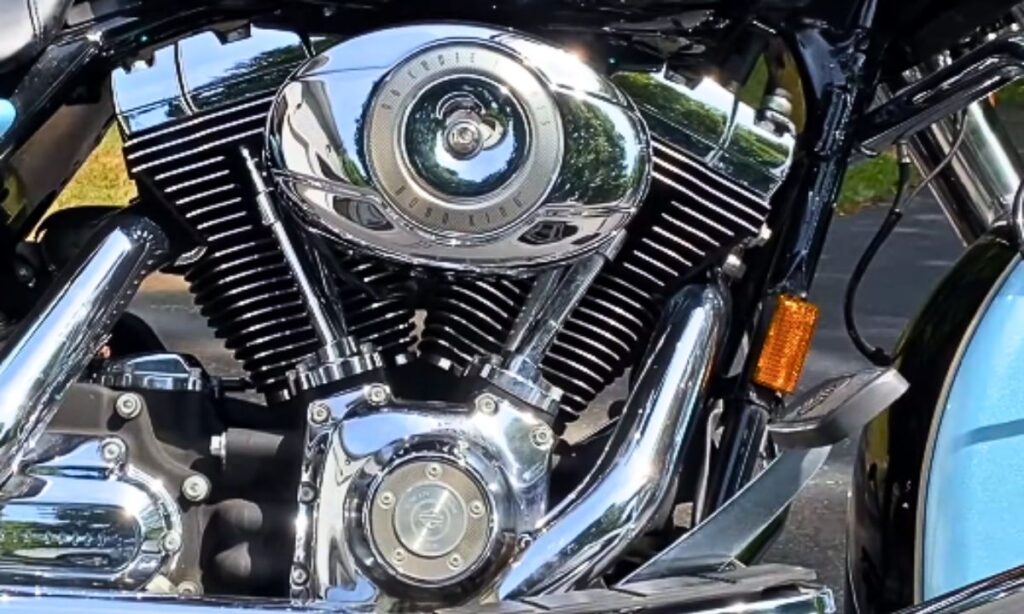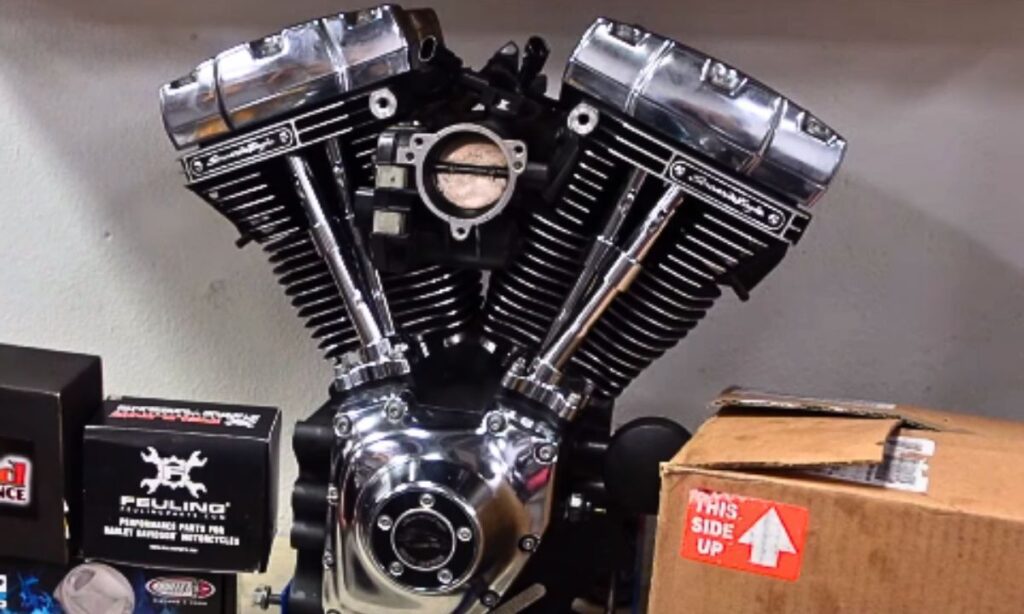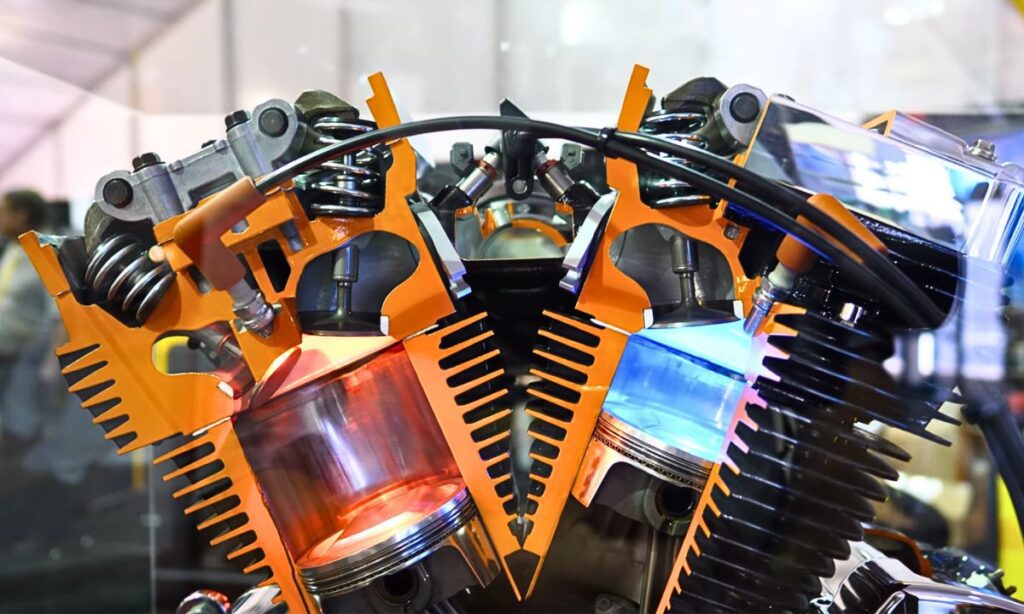Just like many Harley enthusiasts, I’ve spent countless hours and numerous weekends in the garage, tinkering with these metal beasts.
I’ve had the pleasure and sometimes frustration of working with various engines over the years.
Still, none has sparked more debate among the Harley community than the transition from the legendary Evo motor to the Twin Cam 96.
And the question is, is the Harley 96 a good engine? Arises in the minds of many riders and enthusiasts.
In this article, we will dive deep into my years of experience and share my insights about this workhorse of an engine.
Is The Harley 96 a Good Engine
The Harley-Davidson 96 cubic inch engine, introduced in 2007, is indeed a worthy power plant.
Known for its robust and reliable performance, it provides a solid balance of power and torque, suitable for cruising and long-distance rides.
Its V-twin configuration ensures a distinct and pleasing exhaust note that many riders associate with the essence of motorcycling.
The engine’s resilience and longevity contribute to its appeal, with proper maintenance often leading to substantial mileage without major mechanical issues.
Hence, the Harley 96 is generally considered a good engine in the motorcycling community.

History of Harley 96 Engine
The Harley 96 engine was introduced in 2007; it is also known as the Twin Cam 96 and was a significant step forward in the lineage of American V-twin engines.
This engine was the company’s response to the demand for more power and torque, especially for the larger touring motorcycles.
The Twin Cam 96 engine featured a displacement of 1584cc, courtesy of its 3.75-inch bore and 4.38-inch stroke.
It was the first time since the Knucklehead that Harley-Davidson increased the bore of its V-twin engine.
The engine also boasted electronic fuel injection, which was steadily becoming the industry standard, replacing the carburettor system.
While the Twin Cam 96 was part of the Harley-Davidson lineup only until 2011, it left a significant imprint on the company’s history and continues to be appreciated by Harley fans worldwide.
The engine, known for its robustness and reliability, continues to power many Harley motorcycles on the road today.
Common Issues With Harley 96 Engine
The Harley-Davidson 96 cubic inch engine, despite being a formidable powerhouse, does have some common issues that riders should be aware of.
One well-known problem is oil leakage, particularly from the air cleaner, which can be attributed to the engine’s breathing system design.
Another significant issue is the premature wear in the cam chain tensioner, which can lead to serious engine damage if not addressed timely.
Furthermore, some owners have reported overheating problems, especially when riding in high-temperature conditions.
1. Cam Chain Issue
One of the more commonly reported issues with the Harley 96 engine is related to the cam chain tensioner.
The cam chain tensioner, responsible for keeping appropriate tension on the cam chain, can often wear out prematurely.
This wear and tear can lead to serious engine problems and, in some cases, complete engine failure.
When the tensioner wears out, the chain can slacken, causing it to slap against the side of the engine or even skip a tooth on the cam gears.
This causes a rough-running engine and severe damage over time. It’s usually identified by a distinctive rattling noise from the engine, especially at idle.
To rectify this issue, you will need to replace the cam chain tensioner. This replacement process involves the following steps:
- Before you start, ensure your engine is cool. Drain the engine oil and safely dispose of it.
- Using the appropriate Torx or Allen wrench, remove the cam cover.
- Visually inspect the cam chain tensioner. If the shoe attached to the tensioner is worn out or the spring has lost tension, it’s time to replace it.
- Remove the old tensioner and replace it with a new one. Ensure the new tensioner is of high quality to increase longevity.
- Reinstall the cam cover and refill the engine with oil.
It’s recommended to inspect your cam chain tensioner every 15,000 to 20,000 miles, depending upon your riding style and the condition of the engine.
2. Stator Failure
One of the common issues reported with the Harley 96 engine is stator failure.
The stator, a crucial part of the motorcycle’s charging system, is responsible for generating the electrical power needed for the bike’s battery and electrical systems.
When a stator fails, the motorcycle might experience a plethora of problems, including a dead battery, dim lights, or even an inability to start.
Stator failure usually can be due to excessive heat and vibration, leading to a breakdown of the insulation and eventual shorting of the stator windings.
Signs of a failing stator include dimming lights, weak battery, rough idle, or the check engine light coming on.
To check the stator failure, use a multimeter to test the voltage between the battery terminals and the engine at about 2000 RPM.
If the voltage reading is lower than the standard 13.5-14.5 volts, it indicates a possible stator problem.
If a stator failure is the root cause of the issue, replace the faulty stator with a new one.
Replacing a stator can be a complex task that requires mechanical knowledge and experience.
If you’re not comfortable doing it yourself, it may be best to take your motorcycle to a professional mechanic.
3. Excessive Vibration
One of the most common issues reported by riders is excessive vibration, which can not only degrade the riding experience but also potentially lead to mechanical problems.
Excessive vibration in the Harley 96 engine is often a byproduct of the engine’s design, as it’s a large V-Twin with a high torque output that naturally tends to vibrate.
These vibrations can be exacerbated if the engine is not properly maintained or if there are issues with the bike’s alignment or balance.
To address this issue, start by checking the engine mounts. These are designed to absorb some of the engine’s vibration and can become worn or damaged over time.
If they are not in good condition, it may be necessary to replace them.
Next, check the alignment of your bike. If the wheels are not properly aligned, this can cause excessive vibration.
You can do this yourself using a straightedge and measuring tape, or you can have a professional perform the alignment for you.
You should also consider investing in a high-quality seat with good padding, as this can help absorb some of the vibration and make your ride more comfortable.
4. Bearing Failure
This problem typically manifests as a whirring or grinding noise, which becomes increasingly noticeable as the bike gains speed.
The root cause is usually inadequate lubrication, although it could also be due to the installation of poor-quality bearings or the presence of dirt.
When the bearing fails, it not only affects the bike’s performance but can also lead to other complications if not addressed promptly.
As bearings are pivotal for reducing friction and ensuring the smooth operation of moving parts, their failure could escalate to more serious mechanical damage.
To rectify this, firstly, identify the affected bearing: it could be the crankshaft, camshaft, or wheel bearings.
Then, arrange for a replacement with high-quality bearings and ensure they are properly fitted and lubricated.
How Does The Twin Cam 96 Compare to The Evo Motor?
The Harley-Davidson Twin Cam 96 and the Evolution (EVO) motor are two iconic power units that have powered Harley motorcycles for years.
The Twin Cam 96, introduced in 2007, boasts a displacement of 96.66 cubic inches (1,584 cc) and an increased stroke length, enhancing torque output and overall power.
The engine’s design, which features two cams, each operating one set of valves, distinguishes it from the EVO motor.
The EVO motor, named for its evolution from Harley’s earlier Shovelhead and Ironhead engines, was produced from 1984 until 1999.
Known for its reliability and easier maintenance, the EVO motor features a displacement of 81.8 cubic inches (1,340 cc).
The EVO motor has a single cam operating all four valves, which contributes to its unique sound and performance characteristics compared to the Twin Cam 96.
The Twin Cam 96 provides superior power and torque, but the EVO motor is renowned for its reliability and simpler mechanical design.
Both engines have their distinct advantages and unique characteristics, making the choice between the Twin Cam 96 and the EVO motor a matter of personal preference, riding style, and maintenance comfort.


Talha Younas, the brains behind the influential motorcycle-focused website, TwoWheller.com, is a dedicated and passionate advocate for biking culture. Born and raised in a family of motorcycle enthusiasts, his love for two-wheeled transportation was ignited at an early age. His commitment to providing in-depth reviews and helpful tips for riders has established him as a respected figure in the motorcycle community.

